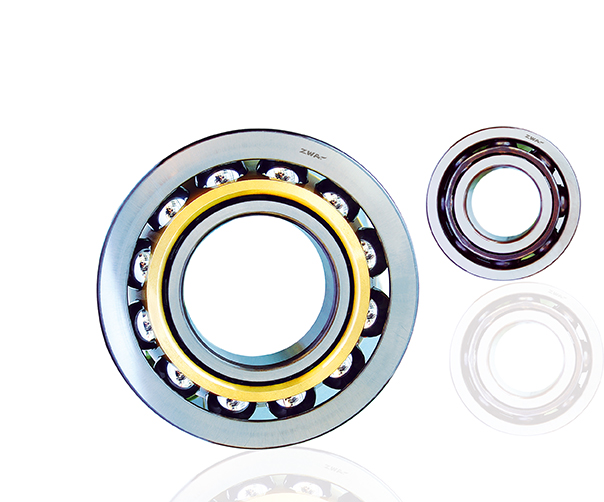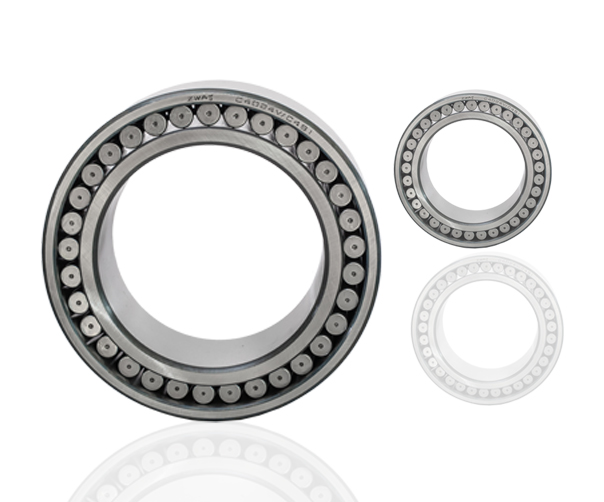Bearing Types And Applications

Types of ball and roller bearings for sale
-
Ball BearingsBall bearings are a bearing between a wheel and a fixed axle, in which the rotating part and the stationary part are separated by a ring of small solid metal balls. The moving parts rotate or slide on metal balls and in this case, the friction is reduced. ZWA ball bearings consist of angular contact ball bearings, deep groove ball bearings and thrust ball bearings.Deep Groove Ball BearingsDeep groove ball bearings are the typical rolling bearings which have the most widely application. It's suitable for those working conditions with higher rotating speed, lower noise and vibrating levels. Meanwhile, this kind of bearings is easy to mount or dismount, require for less maintenance and inspection. With deep groove ball bearing factory, ZWA' s products include single row and double row ones. For the single row deep groove ball bearings which are also the most widely used type, ZWA offer it with both capped and open. For the capped ones, it includes anti-rust design and anti-oil design. For the anti-dust design, the bearings are with pressed steel cap. And for the anti-oil design, the bearings are with seals to prevent lubrication leaking from inside.Angular Contact Ball BearingsAngular contact ball bearings, also known as acbb bearing, are a kind of inseparable bearings, the side shoulders of the inner ring and outer ring are uneven. In order to increase the load capacity, one of the side shoulders will be lower than the other.
This kind of bearings has raceways both on the inner ring and outer ring.Thrust Ball BearingsThrust ball bearings are one of the rotary ball bearings. It owns the same features as other ball bearings, i.e permitting rotation among the parts. Depending on different load capacities, ZWA’s thrust ball bearings include single direction and double direction ones. The one-direction thrust ball bearing, consists of a shaft ring, a housing ring, a cage, and balls. It can bear one direction axial load. For double-direction thrust ball bearings, it consists of one shaft ring, two housing rings, two-row balls, and a cage. Those two housing rings and cage components of double direction thrust ball bearing are almost the same as those of single-direction thrust ball bearings. It can bear axial loads in two directions. The shaft ring match with the shaft and the mounting surface of housing ring is a kind of spherical bearing which owns the aligning function. Those functions can reduce the effect error in mounting. -
Roller BearingsRoller Bearings is a type of rolling-element bearing that uses rollers to keep the separation between the moving parts of the bearing and consists of cylindrical or tapered rollers running between raceways in two concentric rings. As a leading roller bearings manufacture, ZWA provides types of roller bearings, including spherical, cylindrical, tapered, circular ring and split roller bearings. Roller bearing can be applied in industries like mining, cement, steel, paper making, petroleum, etc.Spherical Roller BearingsDeep groove ball bearings are the typical rolling bearings which have the most widely application. It's suitable for those working conditions with higher rotating speed, lower noise and vibrating levels. Meanwhile, this kind of bearings is easy to mount or dismount, require for less maintenance and inspection. ZWA's deep groove ball bearings include single row and double row ones. For the single row deep groove ball bearings which are also the most widely used type, ZWA offer it with both capped and open. For the capped ones, it includes anti-rust design and anti-oil design. For the anti-dust design, the bearings are with pressed steel cap. And for the anti-oil design, the bearings are with seals to prevent lubrication leaking from inside.Tapered Roller BearingsTapered roller bearings, also known as TRB bearing, are also a kind of bearing can be separated, a tapered raceway featured the inner and outer rings. In general, tapered roller bearings can bear both radial and axial loads. According to the different number of columns rollers, it can be divided into single row, double row and four row types.Toroidal Roller BearingToroidal roller bearings are kind of new single-row radial bearing. It has crowned symmetrical rollers and circular ring raceways.The rollers of the toroidal bearings are self-guiding, that’s to say they adjust the position in which the loads are averagely distributed over the length of the rollers no matter the inner ring is axial displaced or not. The raceways of the inner rings and outer rings are concave and arranged symmetrically about the center of the bearings.Split BearingsSplit roller bearings are specially designed based on the original spherical roller bearings and cylindrical bearings. The aim of split bearings is to solve the problem of quick replacement of bearings at unattainable positions or points. They are suitable for the application of lower rotating speed, higher load, shock loads, harsh working conditions and those positions where it is hard to access. ZWA’s split bearings include split spherical and split cylindrical roller bearings.
Roller Bearings VS. Ball Bearings - What's the Difference?
As a general rule, ball bearings are used at higher speeds and lighter loads than are oller bearings. Roller bearings perform better under shock and impact loading.
Ball bearings are usually sold as assemblies and are simply replaced as units. Roller bearings can often be disassembled and the roller carrier and rollers, or the outer or inner races, replaced individually. Rear-wheel-drive cars use such arrangements for the front wheels. The advantage of this design is that the races can be shrunk fit onto shafts and into housings to create permanent assemblies without risking damage to the rollers themselves.
Single-row ball bearings are standardized and can be used interchangeably among manufacturers. Roller bearings are less-formally standardized so a specifier needs to consult a manufacturer's catalog to select one appropriate for the application.
Rolling element bearings are manufactured with a certain amount of internal clearance. Any misalignment that merely nudges a ball out of position and removes this internal clearance should not have much effect on the life of the bearing. Roller bearings are more sensitive to angular misalignment. For instance, a ball bearing running at moderate speed with a farly loose fit might operate successfully with angular misalignment as high as 0.002 to 0.004 in./in. between the bearing and shaft. A cylindrical roller bearing, in comparison, might be in trouble if misalignment exceeded 0.001 in./in. Manufacturers will generally provide acceptable ranges of angular misalignment for their individual bearings.










